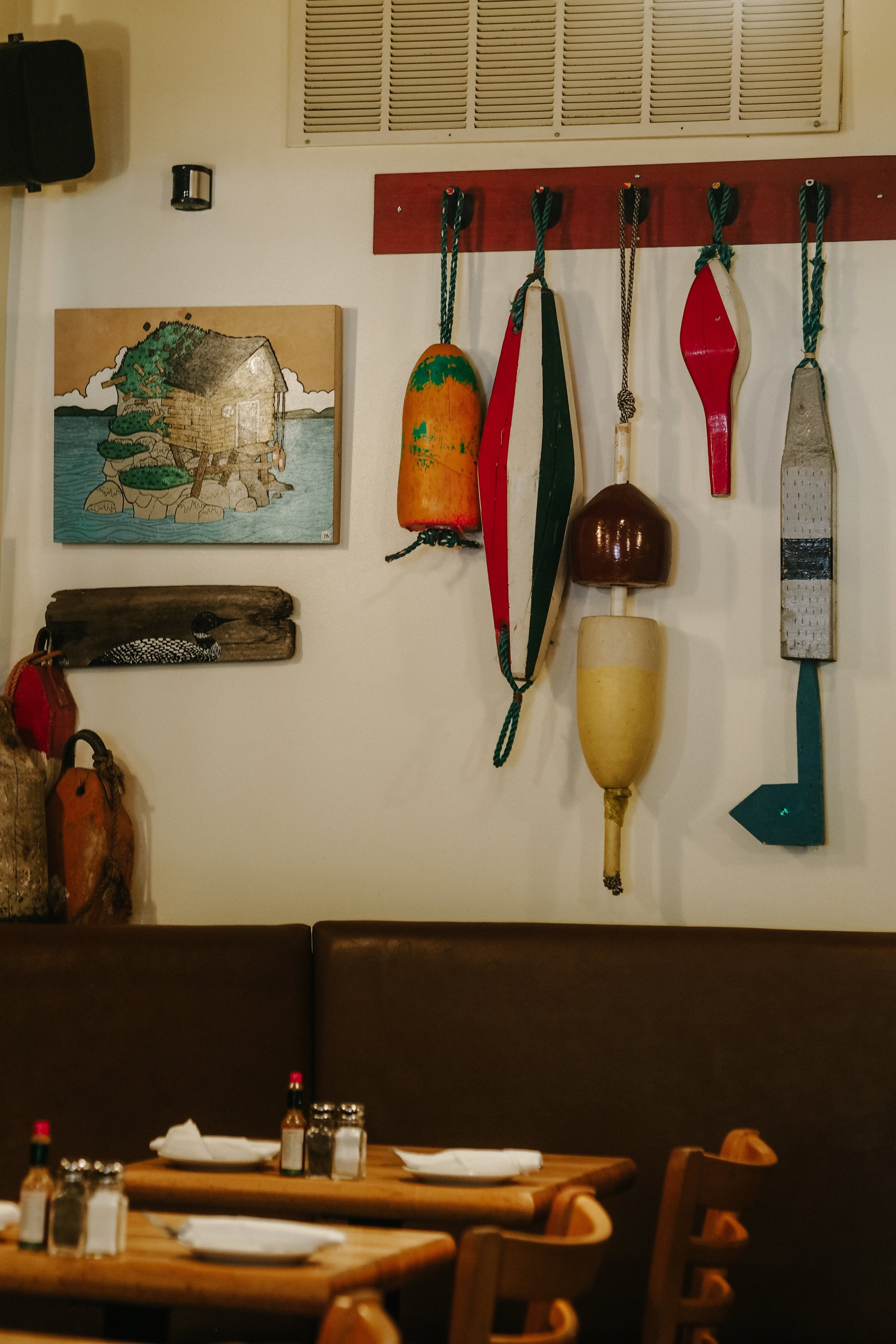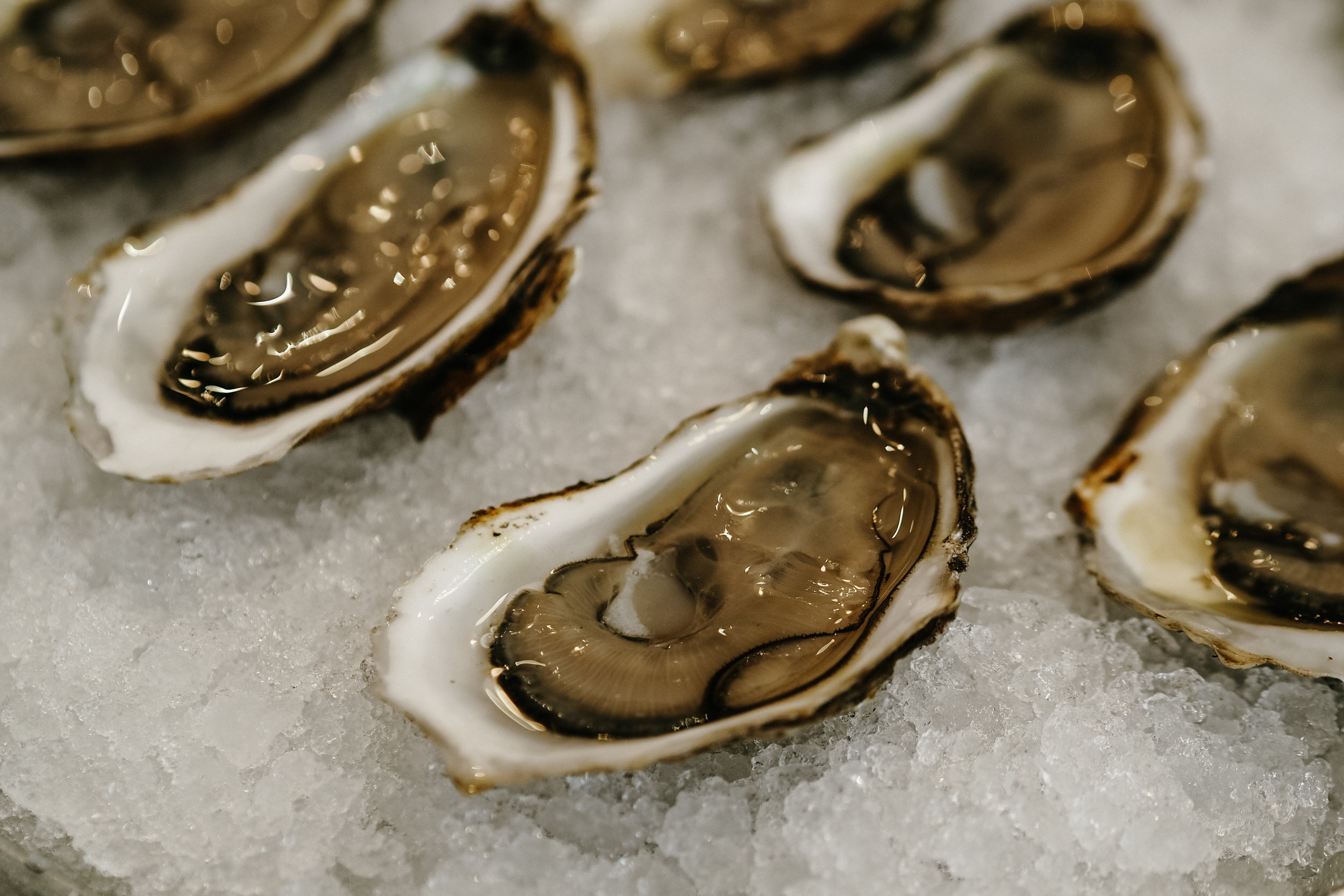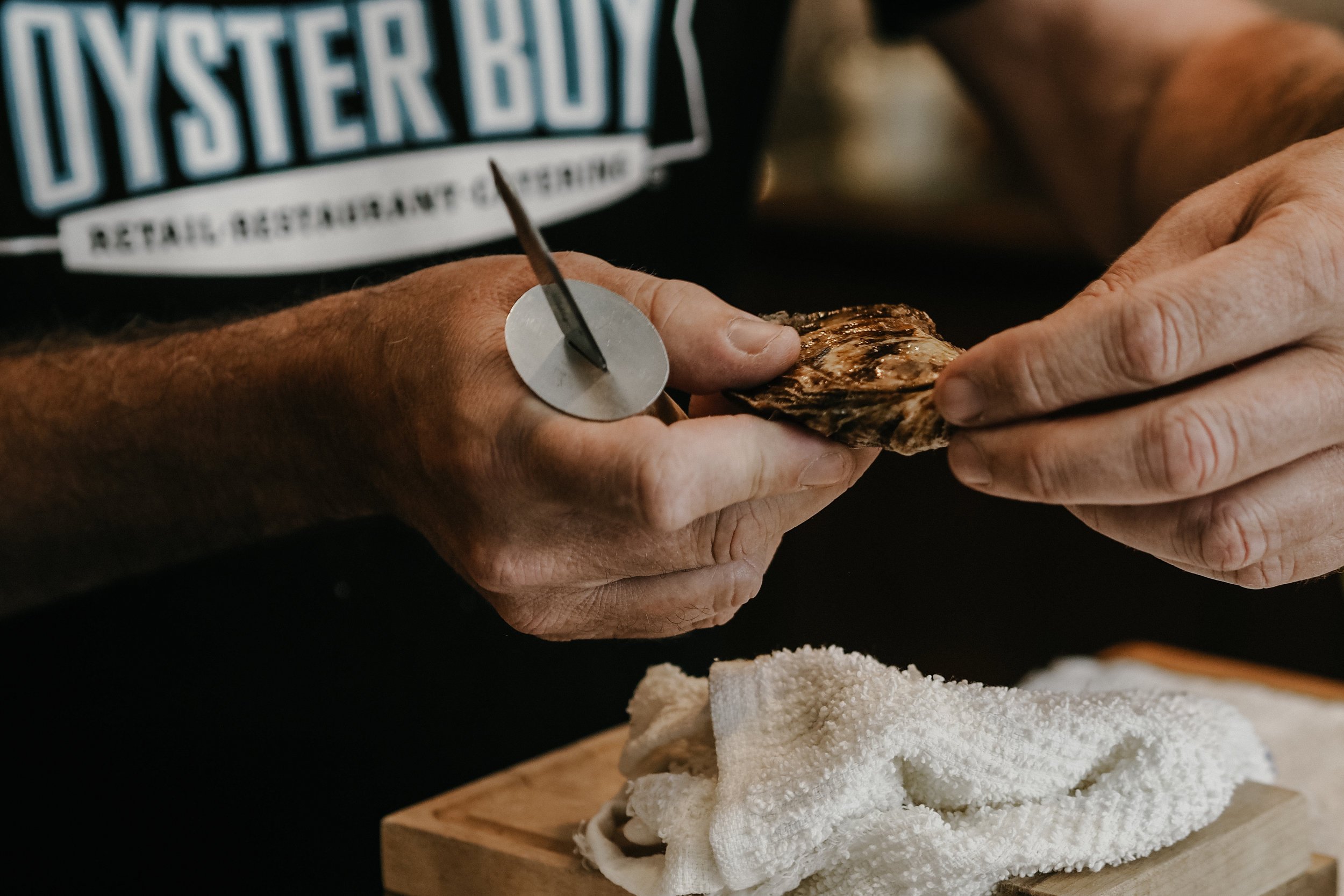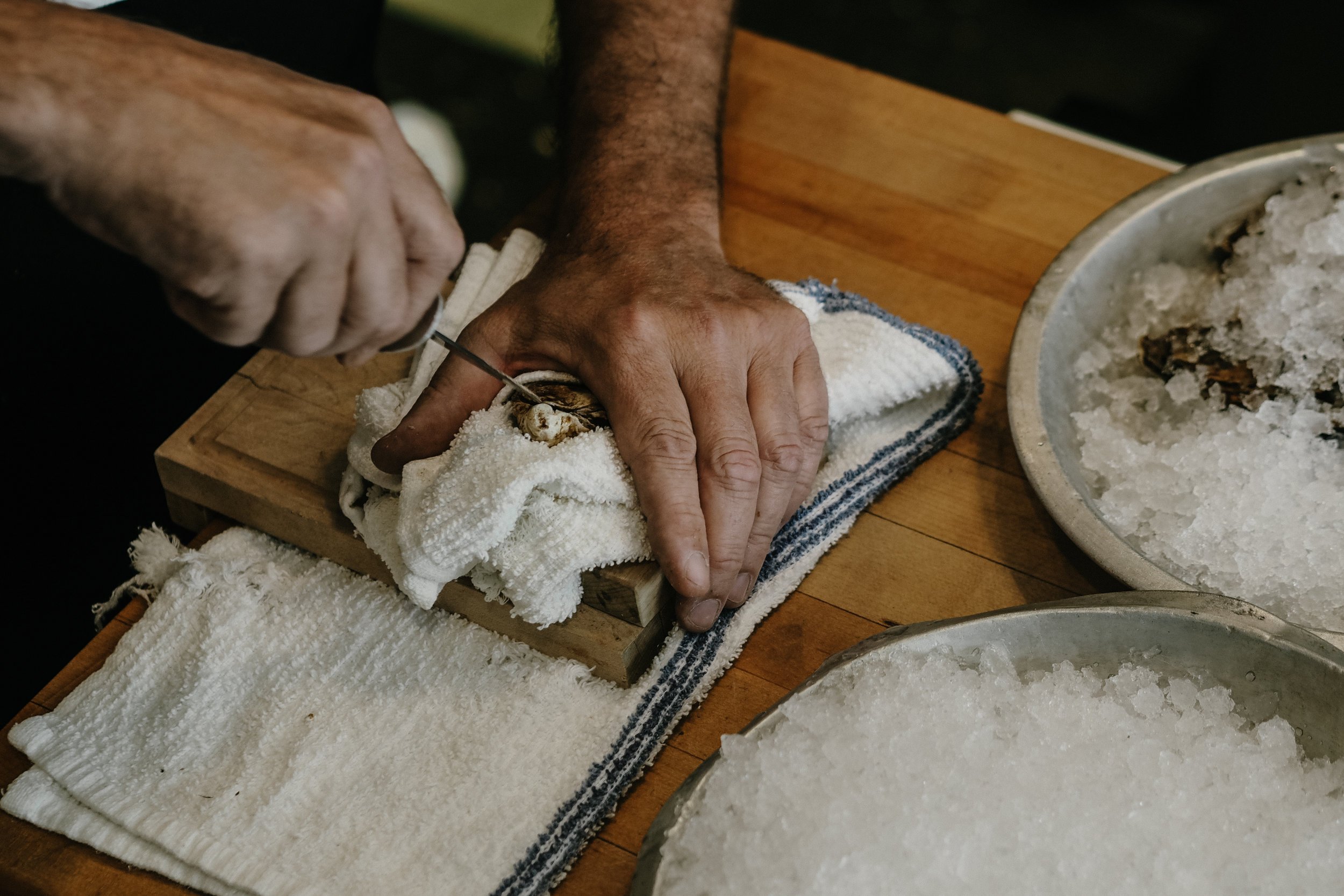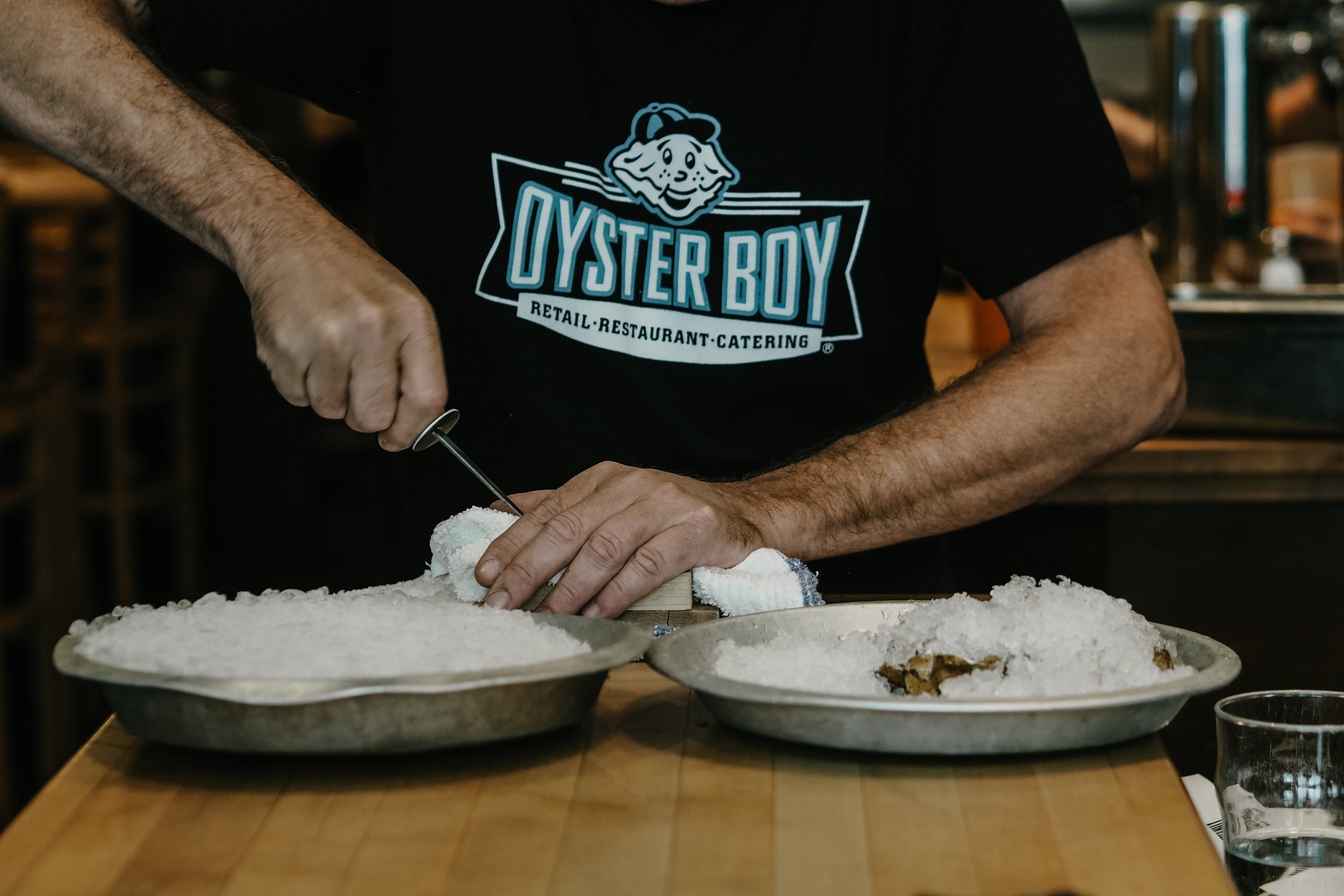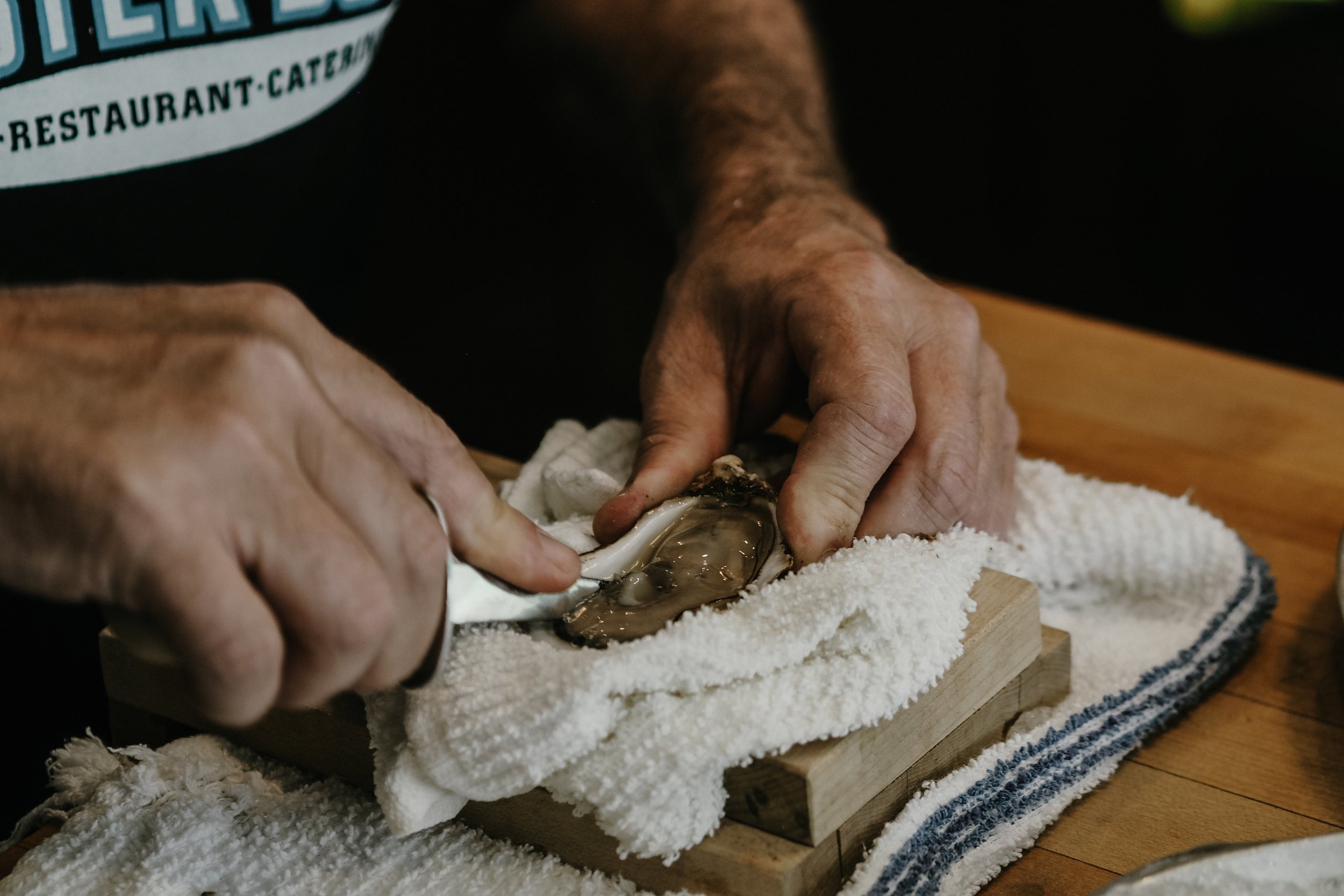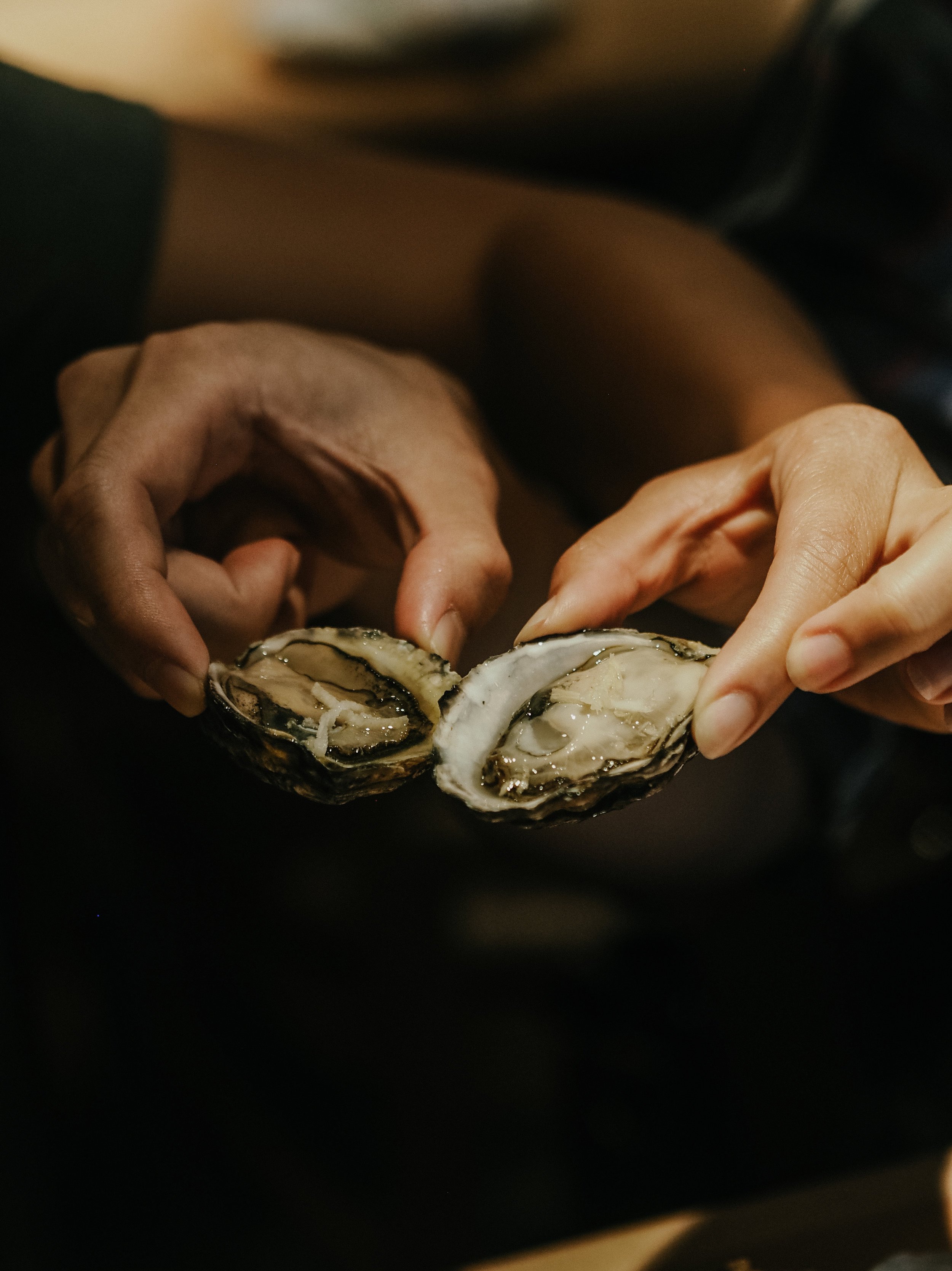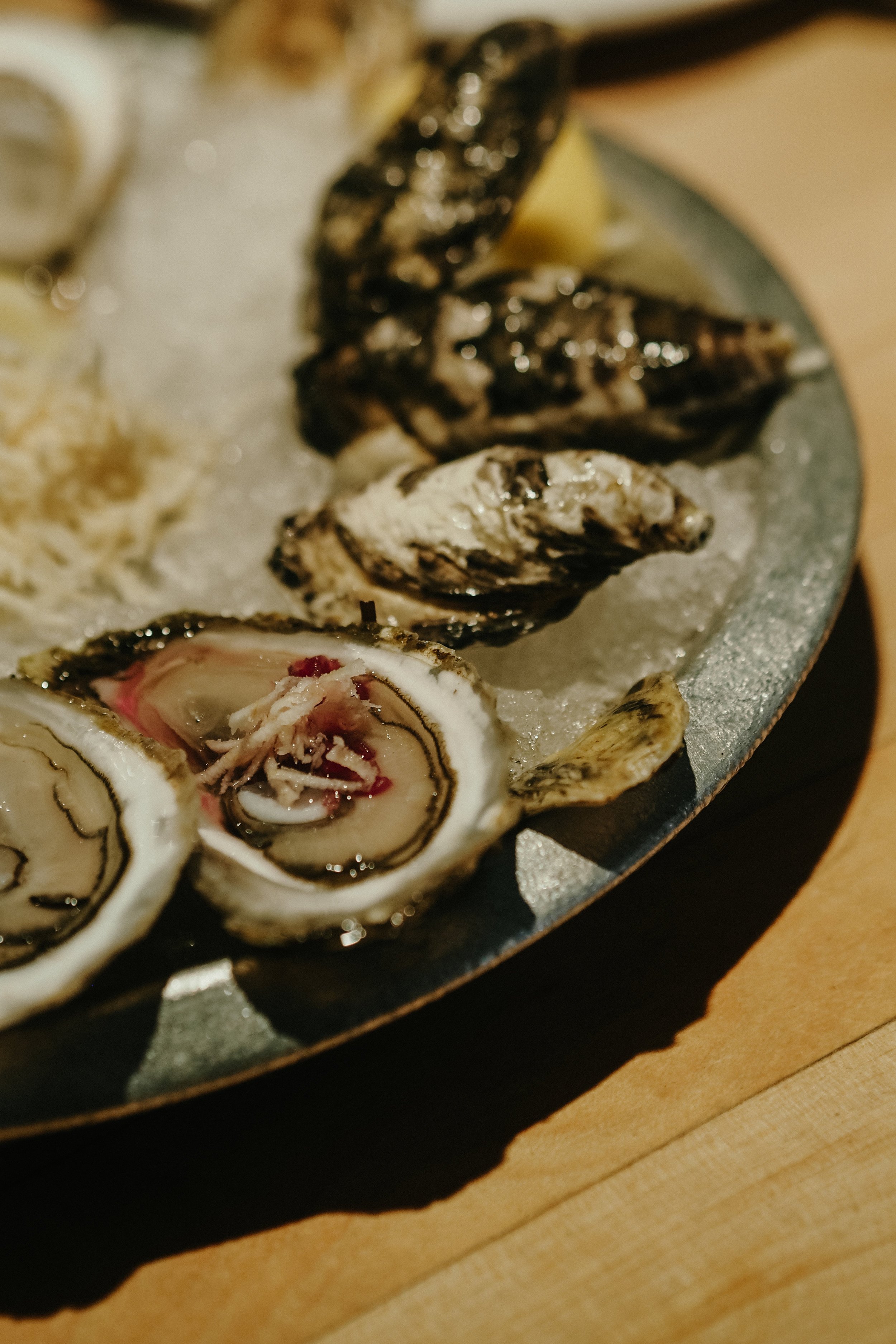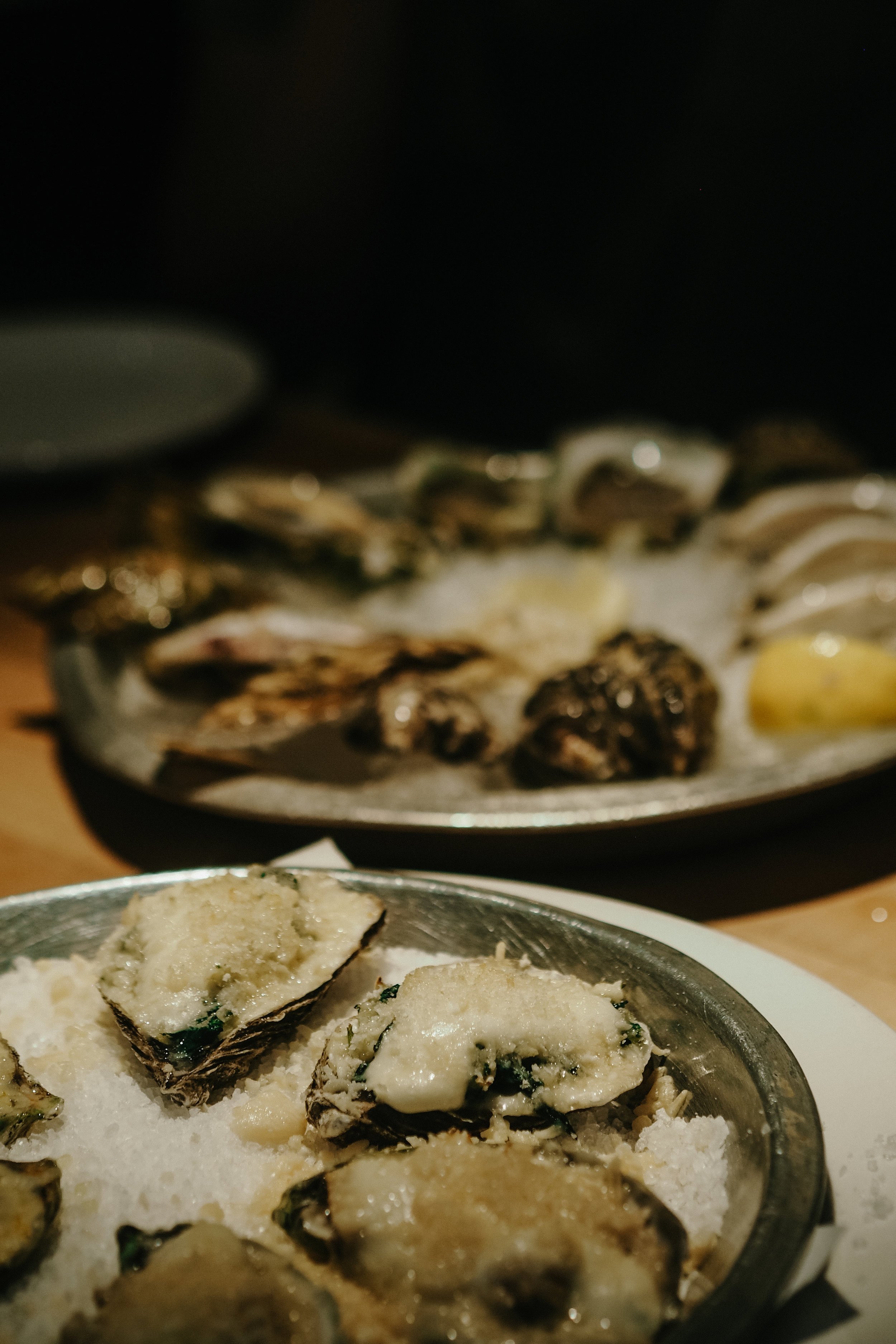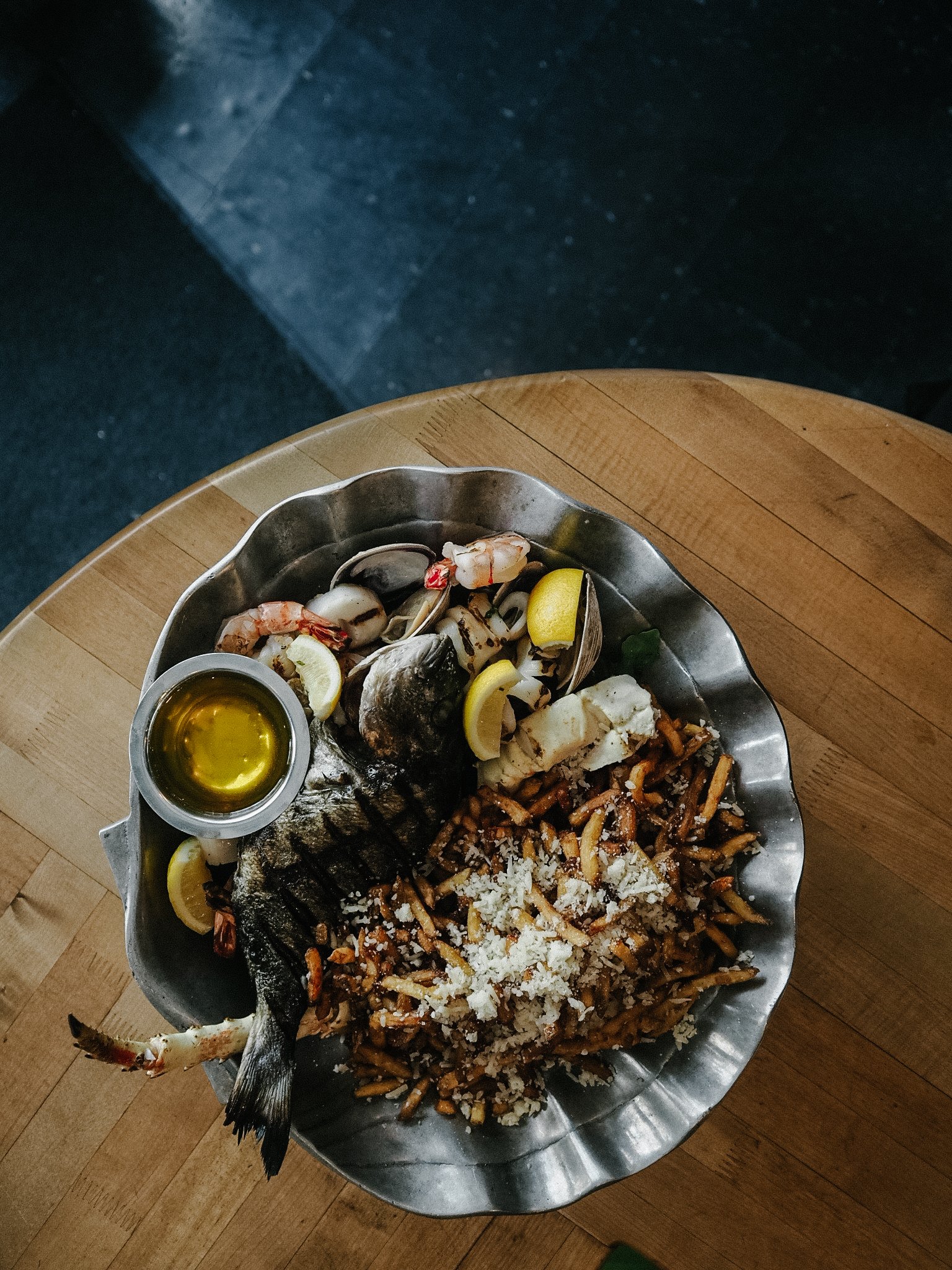Oyster Boy: The Godfather of West Queen West
“Looking good, Adam!”
I’ve been cat-called before, even yelled obscenities at, but never have I been privy to a drive-by compliment. The source: a driver passing across the street from Oyster Boy’s West Queen West restaurant. We were photographing owner Adam Colquhoun in front of his storefront and his reaction somehow suggested that this was a regular occurrence for him. Back inside, Chef Paul Boehmer, of the eponymous restaurant on Ossington, stops by just to say hello; they fondly recount to us a sourcing trip they took to the east coast.
It seems that Adam knows everyone in these parts. Having lived in the neighbourhood for the better part of 30 years, it comes with the territory. He’s seen the area transform from an industrial hub - home to the Massey Ferguson Tractor Factory some of the streets are still named after - to the gentrified capital of hipster yuppies it is today.
“People thought I was crazy when I bought The Swan, saying, ‘wow, that’s way west’. Toronto’s got to go somewhere, right?” Adam recalled. He explained that back in the day, no one went west of Bathurst, let alone Trinity Bellwoods park, which had a seedy reputation as a meeting place for street gangs and purveyors of illicit sex, and a depository for dog shit. How far the West End has come.
From Beer to Bivalves
Adam has been ingrained in the business of food all his life. At the age of twelve, he worked on a farm. At sixteen, he started working in the restaurant business. “My father was ashamed of me, because no one was in the restaurant business,” Adam remembers. When he was twenty years-old, he went to work for Ice House (now Rodney’s Oyster House) with Rodney Clark himself, under previous owner, Katherine Von Ofenheim. He helped open the restaurant and hired staff, but left only 7 months later to pursue an opportunity with Upper Canada Brewing Company.
Adam Colquhoun demonstrates how to shuck an oyster.
Adam excelled as the top sales representative for Upper Canada, selling 12% of the brewery’s production; more beer than all the other reps combined. As an incentive for his customers to add Upper Canada brews to their tap selection, Adam hosted monthly oyster nights at their establishments at cost. Soon, patrons began offering him catering gigs and that’s how Oyster Boy started as a catering business in 1992. Three years later, he was wholesaling.
For the enterprising young Adam, this all happened while he was still working for Upper Canada. To the brewmasters’ dismay, he would hide cases of oysters between beer tanks in the brewery’s refrigerators. The rest of the inventory would sit in fridges in his Parkdale basement. “I was at the forefront of the oyster world and I was at the forefront of the microbrewery industry too,” he says.
If you ask Adam about what the turning point was for leaving the microbrewery industry for Oyster Boy, he’ll tell you it was happenstance. But in reality, Adam is gifted with the foresight to identify and seize opportunities the way any good businessman should. “By the time I left Upper Canada, we were up at about $80,000 sales a year, which you know, with catering, it’s a good profit margin with that. Another, probably, $30,000 in wholesale. Already, over a $100,000 just sat in my basement. Upper Canada had gotten bought by an investment firm in the States, and then they got bought by Sleeman’s. But when the investment firm owned it they paid me, because I went in and said, ‘I'm going to go work for this brewery and I'm going to steal every single account you have. I’m going to kill you. I'm going to fucking murder you’. And they said, ‘Here's $50,000. Don't work for another brewery for two years, please’ and I said, ‘Thank you very much’. But I had already done the business plan for The Swan Restaurant.”
A treasured community institution, Adam refurbished The Swan (which he sold twelve years ago) and brought it back to its former glory. He converted a little Coke fridge from The Swan into an oyster shucking station, but otherwise, The Swan and Oyster Boy would remain two separate entities. “The catering was still taking off, I was doing a lot of wholesale, and I knew I was going to open an Oyster Boy restaurant.”
At the time, the former tenant of Oyster Boy’s current space was New Harmony Diner. Shortly after the owner died unexpectedly during brunch service one weekend, it was no surprise to the neighbours that Adam would take over. The owner’s brother and landlord was also a friend. It took two years to renovate as they did the build-out themselves. And in 1999, Oyster Boy opened its doors.
“Oyster Boy has served people here on their first dates and oysters at their wedding,” Adam declares. “And then welcomed their new child coming in, and then the child gets older, above twelve, and then they're here slurping oysters when they're fourteen.”
Weathering the Storm
In a city where the only constant is change and in an industry where restaurants come and go at the blink of an eye, Oyster Boy has stood the test of time. And they’ve done so, remarkably, by changing very little at all. “There’s not a lot you can change, ‘cause then the regulars freak out. It’s a menu eighteen years in the making,” explains Adam.
The restaurant itself is timeless, with a plain wooden bar, comfortable booths, walls full of old photos from decades of coastal visits, and fishing memorabilia. It’s reminiscent of the type of place you find on annual pilgrimages to the coast, be it east or west, that many Canadians remember doing with their families in the summertime.
And, in a time where everyone is telling you that all the things you love to eat will kill you or the planet, oysters are virtually exempt from that list. “When you're farming oysters, you’re just helping Mother Nature,” says Adam. “You’re not adding any food to the water or anything. They're meant to grow in large groups, they don't have any shit like mussels. [...] So, then I kind of realized, ‘Wow, this is...I picked the right course, right? To back? Because oysters are incredibly sustainable, again, organically grown. We're running out of fish. People eat more fish because everyone's talking about healthy.”
While the restaurant may have remained the same for all those years, they’ve never failed to remain relevant. “There's a lot more food festivals now,” Adam remarks. “So we partake in a lot of those because, if I don't, someone else will. I don't want that to happen. So anything that changes, we just go with the flow, right?”
There’s more to it than being relevant and being present, however. Rodney’s and Oyster Boy have dominated the Toronto oyster scene since day one; as a result, Adam’s restaurant has seen lineups since day one. But he’s also had his share of difficult times. With the SARS outbreak happening not long after 9/11, the city was a veritable ghost town for months. Adam recalls making a delivery to the Westin Harbour Castle for a measly six to twelve oysters, when they’d normally deliver more like 600 every few days.
Mollusks for the Masses
What has truly sustained Oyster Boy and maintained their unparalleled quality and subsequent brand over the years is the investments they’ve made into their industry.
“We buy directly from the oyster growers. Again, I’ve been in business for thirty years - for thirty-two years. A lot of these growers, I knew before they were growing. A lot of them I knew when they weren’t even born. Like, I knew their parents. [...] A lot of these people would be starting up and I'd discover them. [...] That's why we have some of the best oysters in Canada; because we were right there. [...] Some of them, I’ve financed in the very beginning when they were first growing, and then I would take it back as oysters later on. Some of them, I didn’t get the money back. Probably lost about $60,000 over the years, but, you know, you want to make an omelette, you’ve got to break some eggs.”
Educating industry workers is another way Oyster Boy has increased the popularity of oysters in restaurant kitchens. “When I started wholesaling, it was a real disconnect between people shucking the oyster, and people serving it. They were all hacked up, and there was grit and sand in it,” says Adam.
Adam would go to restaurants to show the chefs, cooks, garde manger, and other back of house staff how to shuck. He would then have them practice on bagfuls of lower quality - or misshapen - oysters and leave. Their fingers bloodied and stabbed, Adam would return an hour later with Oyster Boy’s signature choice oysters, not only to showcase the difference in quality, but the difference that quality makes in the ease of preparation. “So we were able to really speed up shucking and let the folks shuck quality oysters, so the front of house staff had no problems selling the oysters.”
This was the inspiration for Oyster Boy’s more consumer-friendly Shuck U program. The two-hour course is taught by Adam himself and covers the history of oysters, how they’re grown, their life cycle, and how they breed. The second half of the course provides detailed instruction on how to shuck oysters with hands-on practical trials by participants, accompanied by an instructor for every two to three students to prevent any injuries or mishaps.
Adam mentioned more than once in our interview that he didn’t realize when he started that oysters would become so popular. I don’t think he realizes, even now, how much he’s impacted that popularity. Oyster Boy’s success has never been just about them; their success couldn’t have been possible without the support they’ve given to oyster growers, the training they’ve provided in the restaurant industry, and the education they offer to the public. Through the passage of time, Oyster Boy has stayed grounded in their motto: Mollusks for the Masses.
Adam is rough around the edges: he swears like a sailor, and he may even yell at you if he catches you putting Tabasco on your oyster. But there’s no denying his kindness and the fact that his heart is always in the right place. A fact that’s most evident when he talks about his daughter. “That's why I didn't open another restaurant,” Adam confessed. “When my daughter was growing up, ‘cause you can’t get that time back. I’ve seen too many people lose out five or six years of their kid’s life. That’s shit, ‘cause that's the most important thing that you do, right? Is have kids.”
We decided to stay for dinner. After all, despite having eaten plenty of Oyster Boy’s oysters at events and festivals, we realized that it was the first time either of The 3 Spoons had ever set foot in the restaurant. It was no fault of our own; we’ve tried to get in multiple times with no luck. They’re just that busy.
The food was, unsurprisingly, absolutely delightful. Experiencing various raw oysters and all three iterations of the baked oysters, it was plainly evident how far superior Oyster Boy’s oysters really are. We then feasted on their Mixed Grill: a generous portion of king crab legs, shrimp, clams, calamari, and a whole grilled fish nestled upon a mound of parmesan fries. Our walk home was hours later, our bellies pleasantly plump. We will be back but, next time, with a reservation.
We recommend you book ahead, too. But if you have a sudden hankering for the tasty bivalves, and the restaurant is full, consider this: why don’t you pick up some oysters at the counter and go shuck, yourself.
Words by Kimberley Kwo. Photos by Abhishek Dekate.
Have a craving for oysters now? We don't blame you.
Check out Oyster Boy's West-side location, and make sure to say 'hello' to Adam and his amazing staff. Don't forget a reservation.
Trust us, it's worth it.



